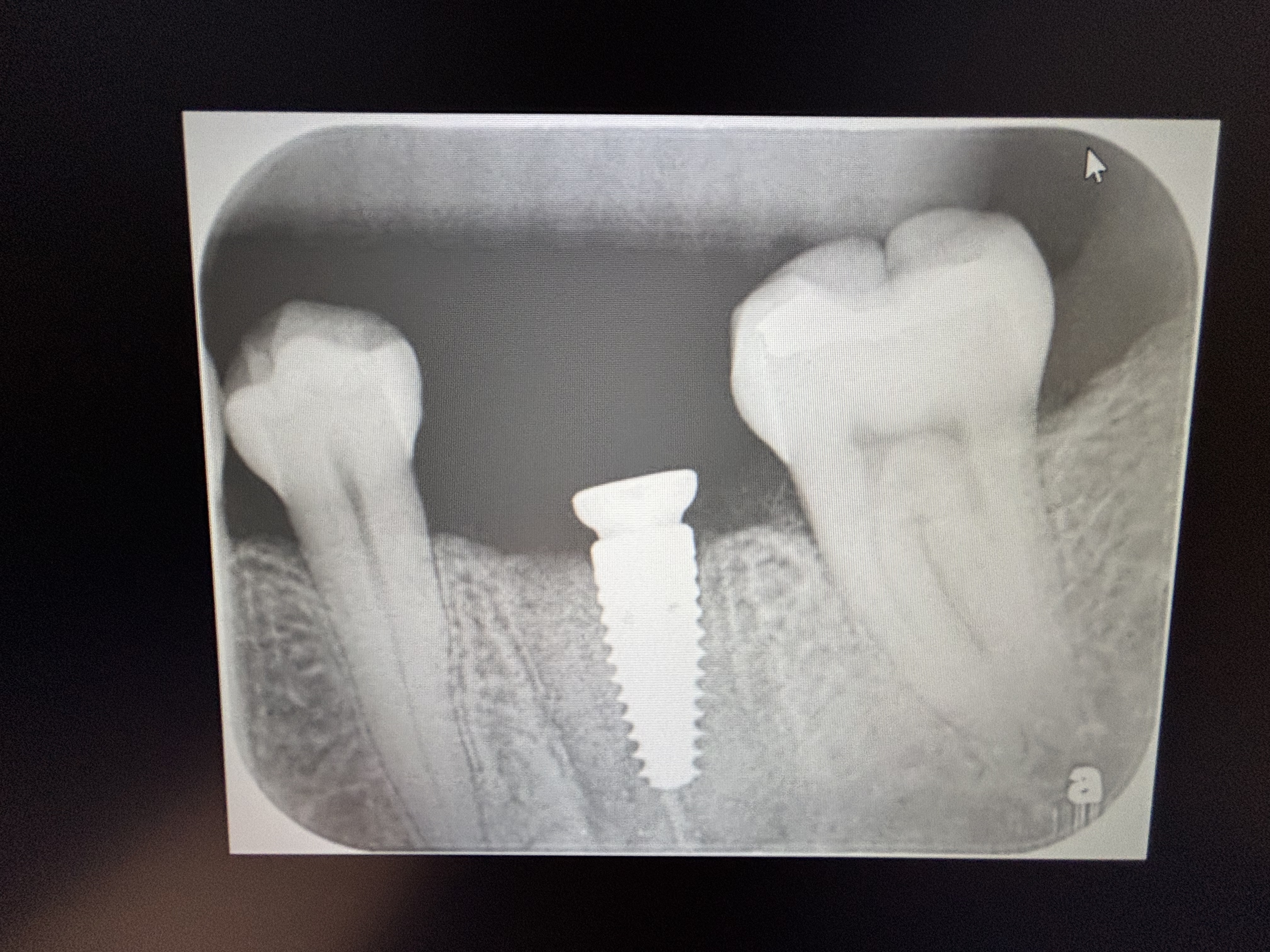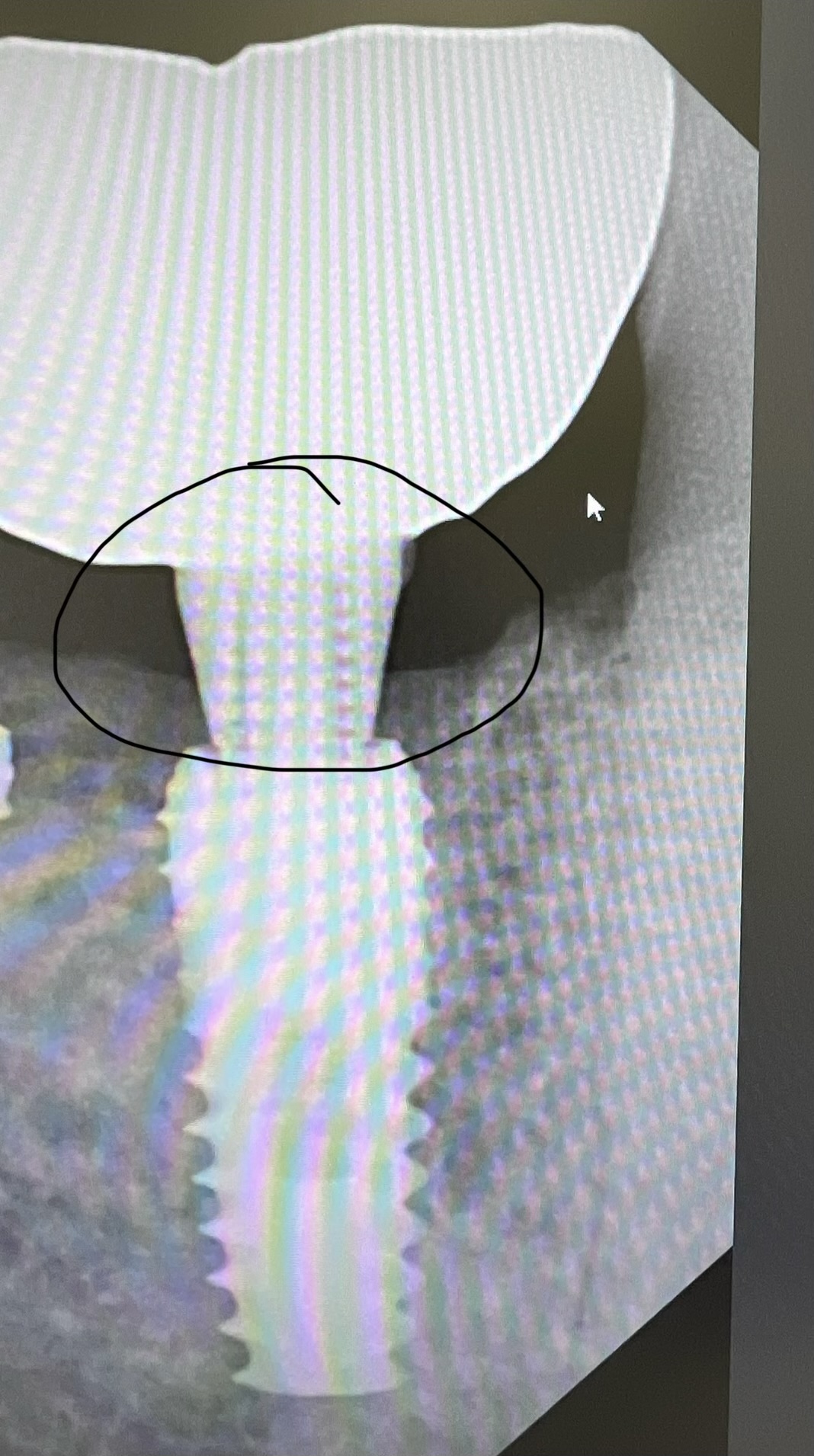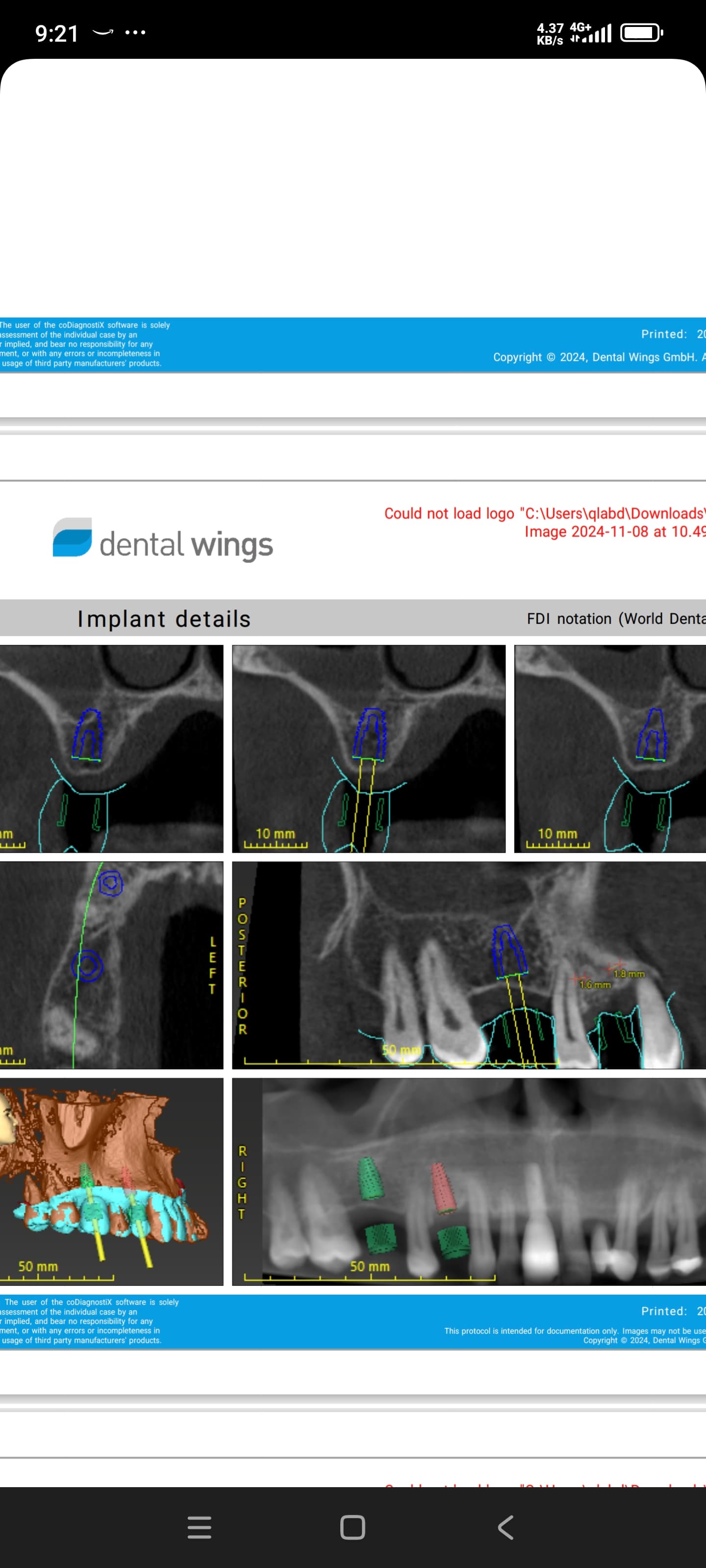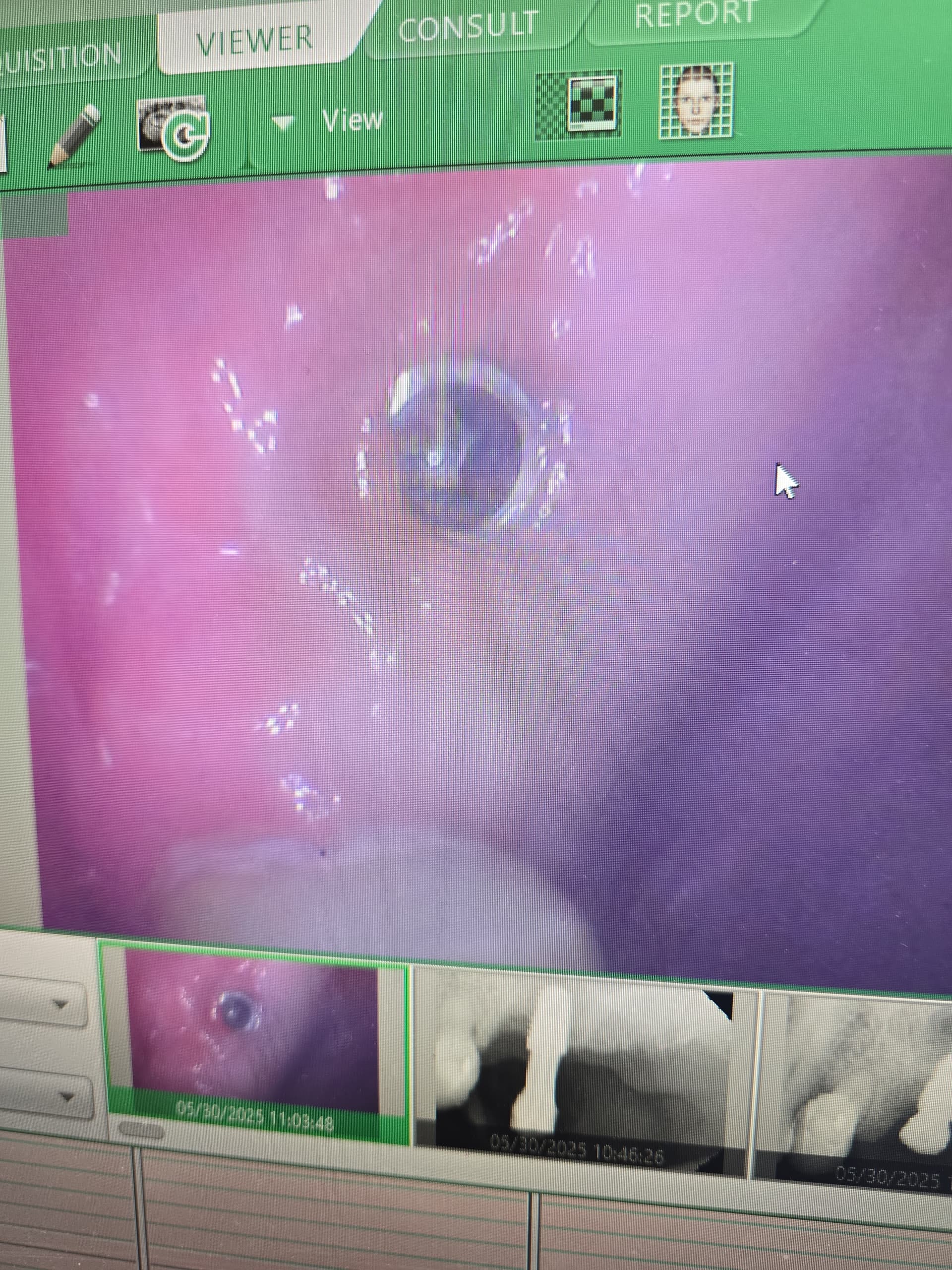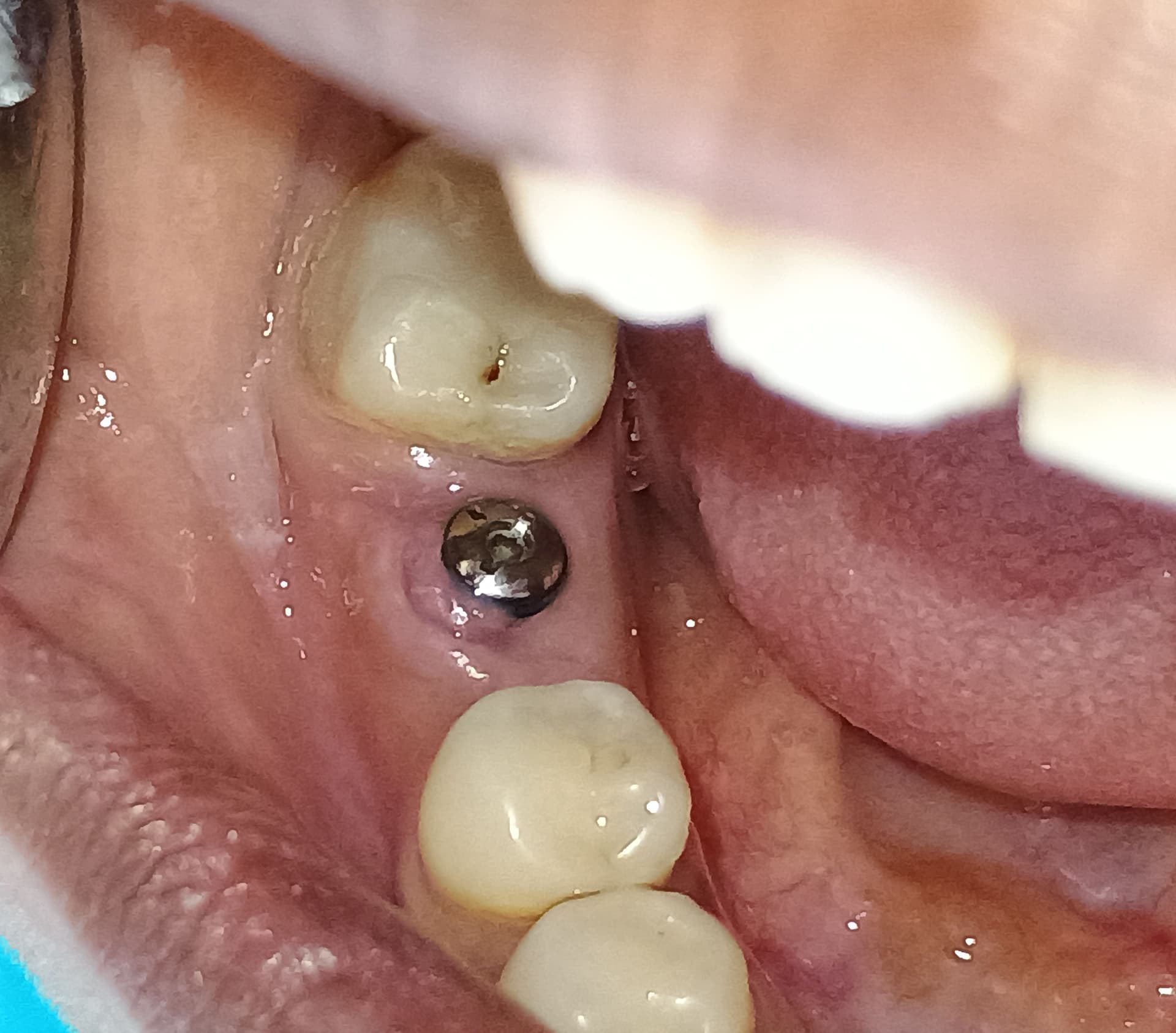What Would be your Extraction Strategy?
Dr. Ziv Simon, asks:
What would be your Extraction Strategy for this case?

24 Comments on What Would be your Extraction Strategy?
New comments are currently closed for this post.
Ehsan Pourshirazi
11/18/2015
I would cut the coronal portion off. separate the mesial root from distal with surgical bur. remove distal root first and then mesial.
ziv
11/18/2015
Great suggestion....
Dean Licenblat
11/18/2015
Hi Ziv,
I would first make a sulcular incision, then I would decoronate the tooth well below the restoration in order to avoid restorative debris in and around the surgical site. I would then section the roots and as Ehsan said remove the distal then the mesial. I would thoroughly degranulate and disinfect the site prior to site preservation technique of choice.
(I would prefer Allograft with Growth Factors with Fibrin membrane on top held in position with 6/0 polypropylene sutures)
ziv
11/19/2015
Works well too
CRS
11/18/2015
Cow horn squeeze the beaks gently together, pump, as tooth elevates the roots will separate. Disenfect with nd-yag, thermogenic clot , graft, primary closure 4-0 chromic. Elevation is key, roots can be removed with a periotome. Cutting off the crown will actually make it harder 😉
ziv
11/19/2015
Works but bone is very dens and risk of root tip fracture is high
CRS
11/19/2015
Not if you know how to use the instrument correctly, cow horn is like using an elevator, if the roots fracture they would have already been luxated. Actually if you read the other posts it will accomplish the same thing. Very few folks know how to use this oral surgeons trick!☺ï¸
ziv
11/20/2015
THanks Excellent comments!
Sboms
11/20/2015
Cowhorn equals fast and atraumatic extraction
Use it at least once a day-
Oral surgeon's best friend
ziv
11/20/2015
Are you coming to Chicago next month's DIC?
Will be there giving a hands-on course
CRS
11/21/2015
Ditto thanks for the support!
franco
11/24/2015
Cow horn as my other colleagues suggested. it is atraumatic and establishes the initial mobility. If the bifurcation area is weak, then proceed with periotome and luxator, the aim of which is to sever periodontal ligament .
Peter Hunt
11/24/2015
If an implant is desired the aim has to be to preserve the walls of the socket. Separation of the roots will be essential and the aim must be to protect the bone between the two molars. The safest and simplest way to start is to use an ultrasonic periotome tip to work down the distal root both mesially and distally. This root should then be able to be elevated relatively simply.
The mesial root is the more difficult one. Here one should be prepared to sacrifice the bone in the furcation region so that the root can be eased back away from the tooth in front. Sometimes it may be necessary to cut the root mesial to distal so that a portion can be removed first.
Once the roots are out and the region is debrided then an implant can be placed with stabilization in the distal root space or slightly apical providing the mandibular nerve is not close. A tall gingivaformer is placed instead of a cover screw. Then augmentation between the implant and the socket walls is performed with a slow resorbing bone graft. Finally, a membrane is secured over the whole socket.
This protocol has been successful in our hands except in the few cases where it is not possible to stabilize the implant. The toughest part is removing the roots!
Ziv Simon
11/25/2015
Great suggestion!
PeterFairbairn
11/25/2015
Routine case for my new Protocol published in Int Journal of Dentistry , split roots remove allow to heal for 3 weeks then clean site ,place into the bifurcation bone and graft with synthetic that sets and suture closed without the use of a membrane .
Load at 10 weeks and you will have TRUE host bone with the benefits of improved Attached Keratinized tissue....
Simple , the body wants to heal , lets work with it .
Peter
CRS
12/1/2015
Hi Peter could you quote the source I would like to read it I'm ready to learn and want to know if these materials are available in the US Thanks
DrG
12/1/2015
That's daily bread for most of us I think. Yes on the cowhorn, it's my best friend. If I can't get that tooth to wiggle after cowhorn and elevator, sectioning and rotating those roots distally will do the trick. I'm just imagining how that crown on #30 will pop off if we are all aren't careful.
Here's a good question for everyone. How many crowns do you pop off inadvertently/week? And if so do you recement permenantly yourself or return to the GP for final cementation?
Spence
12/3/2015
DrG, I have the same approach that begins with elevator/cow horn as plan A and if that isn't working, then fall-back to decoronating/sectioning as plan B.
You mentioned the possibility of popping off the crown on #30 if one is not careful, then asked about the weekly frequency of inadvertently popping off crowns. Does this happen to you at a rare that can be stated in crowns/wk? I'm a generalist and do most (but not all) of the extractions my pts need. I'm sure you extract more frequently than I do, but my rate of inadvertently popping off crowns would be stated as a few per decade. My reaction to that occurrence depends on the situation: if there is no decay and bleeding is controllable, I permanently recement then and there at no charge. If I cannot, then I temp cement and schedule it 1-3 wks post-op and charges depend on the situation...if no decay I figure I caused the popoff. If decayed, then I tell the pt it is fortunate it popped off before the hidden decay ruined the tooth altogether and try hard to deal with decay and recement permantly at that 2nd visit, with charges accordingly. If I referred for extraction, I'd expect you to permanently recement that day if at all possible. If I refer and you tend to popoff good crowns and tend to send pts back to me to recement, then I'll tend to refer elsewhere.
DrG
12/3/2015
I do recement them all with permanent cement if there is no decay present. My problem has become that my referring doctors prefer different cements for their, pfm, bruxzir, pfg etc.. Crowns. No one uses old zinc phosphate anymore it's Fuji, or cem-bond or zlink you name it they all use it. It gets a little confusing.
Generally it's the bonded crowns that pop off the most and yes it's at least one a week. (Keep in mind I remove 40-60 teeth and place 20-30 implants/week)
Spence Bloom
8/12/2017
A very delayed reply: If you popped off a crown and, in your opinion, there was no reason to not recement it with permanent cement and did so, I would appreciate that on behalf of the pt and myself. I wouldn't be critical about which cement you used...unless the pt returned to me soon after because it came out again. Then we'd have to talk about it, because either how you cemented it or what cement you used needs to be changed..."permanent cement" should do its job for many years without coming out. In general, though, it is the "right thing to do", and I would be appreciative that you tried to get it done. I would not appreciate if a pt was sent back to me with crown in hand, with instructions to recement it because it popped off during extraction.
12/1/2015
The Fairburn/Leventis protocol article is at: http://www.hindawi.com/journals/ijd/2015/589135/
I don't know if the specific products are avail. in the US...but this info is from the article:
Ethoss (Regenamed Ltd., London, UK) is a biphasic
alloplastic grafting material consisting of beta-TCP (65%) and
CS (35%).When mixed with sterile saline, the material forms
an easily handling moldable mass that hardens in situ.
No barrier membranes were used. Flap was repositioned.
===
Fortoss Vital (Biocomposites, Staffordshire, UK) is a
biphasic alloplastic bone graft consisting of beta-TCP in a calcium sulfate
(CS)matrix.This graft material has an increased
negative isoelectric charge (Zeta Potential Charge [ZPC]) in
an aqueous solution, which has been shown to upregulate the
host response by attracting positively charged host bone
morphogenetic proteins to the site. These in turn result in
the increased presence of osteoblasts to the site for improved
early bone regeneration. Fortoss Vital acts as a scaffold for
bony proliferation as it is slowly resorbed by osteoclastic
activity and substituted by living bone cells that grow directly
in contact with the mineral. The product forms a simple to
use, moldable cohesive paste that sets to form a hard, but
resorbable, osteoconductive bone graft material.
Ken
8/11/2017
Thanks for listing the article. Very nice
PeterFairbairn
12/3/2015
Hi CRS , Sorry missed your question as have been travelling to speak at this time of the year . Vital in its Orthopedic format is available in the US and EthOss is currently awaiting FDA approval but DDS Gadget sell some similar products involving CaSo4 that are a very viable solution .
Both these materials are seen to be osteo-inductive as well due to BTcP presence ( Now verified in the Denatl research as well By Miron ,Sculean and Buser , July Issue of COIR ).
Yes there some inroads in True GBR which seem to be interesting
Regards
Peter
PeterFairbairn
12/3/2015
The Paper has a lower molar case like this which is one of hundreds , so shows how this is dealt with to optimise the end amount of attached Keratinised Tissue .
Peter










